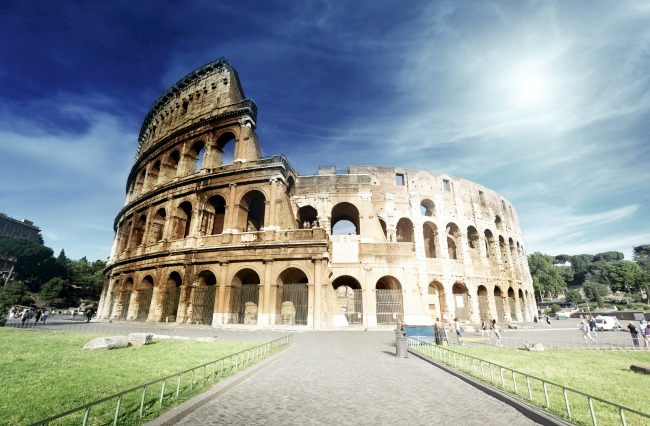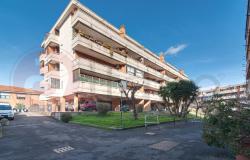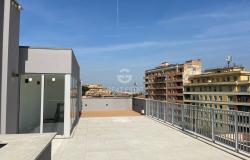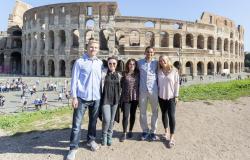One of the hardest cities in Italy to get a handle on is Rome. Sprawling, confusing and without a centre, Rome’s history cover shelves of book space that even the most scholarly find daunting. The notion of doing Rome in a day is ludicrous, but it is entirely possible to have a nibble at the delights and be overawed in a single day. Get out the guide book and put on the walking shoes and enjoy a Perfect Day in Rome.
Many times I have had distress calls from friends who have arrived in the city and found it mind-boggling. Hitting Rome in a jetlagged and travel-weary state is not to be recommended. It is demanding for the sightseer, there are floods of tourists, pickpockets abound and public transport is poor. I always suggest to friends that they plan only a few days at most for their first foray to the ancient capital and then return for more once they’ve got the taste for it. Once you have experienced Rome you can return again and again, delving deeper, experiencing the romantic essence of an extraordinary city and the greatest wonders of the world.
A matter of time
I highly recommend that you dawdle and stretch my tour for hours but if you have a time constraint you can do it in an energetic three hours without stopping. There are plenty of places to see for free, cafés with views abound and there are museums and monuments that you can pay to explore at your leisure.
I always start at Termini station. If you need to leave luggage allow more than an hour for the queue to have your bags scanned, as there are no lockers. You can take the blue Metro line by buying a ticket from the tobacconist (direction: Laurentina) and alight at Collosseo, only two stops from Termini. You emerge from the untamed underground to be greeted with one of civilisation’s greatest achievements.

The Colosseum (AD 72) is open every day although you may find a queue. Allow about an hour and a half if you decide to enter but I always like to sit for a while in the shade of the trees near the magnificent Arch of Constantine (AD 315).
From here turn north-west along the Via Sacra and enter the Forum, the commercial, political and religious centre of ancient Rome. Excellent guidebooks are available from vendors, showing contemporary photographs overlaid with artists’ impressions of how the buildings once looked but I always like to allow my imagination to work for itself.
Proceed through the ruins, past the Arch of Titus (AD 81) and on to the Arch of Septimius Severus (AD 203), passing the Basilica of Constantine and temples of Castor and Pollux, Vespasian and Saturn.
Finding Rome's Treasures
Take the stairs slightly to the right and climb directly up to the Piazza del Campidoglio, designed by Michelangelo, with a splendid equestrian statue of Marcus Aurelius(c200 AD). The original is housed in the Capitoline Museum which flanks the piazza on two sides.
The Museum is open every day but Monday and displays some of the most marvellous antiquities, many of which have been kept on the Capitoline Hill since being excavated during the Renaissance. Allow at least an hour and a half or longer if you wish to have lunch in the museum restaurant with views over Rome.

From the Piazza, turn back toward the Forum and take the stairs to what is now your left. You are at the rear entrance to the Victor Emmanuel Monument, an over-the-top salute to Italy’s first king. The building, open every day, is also a museum dedicated to the Risorgimento (Reunification of Italy) with an abundance of fading flags and busts of Garibaldi and his heroic victory. Best of all there is a splendid cafeteria on a terrace with a marvellous view of Rome to the south-east. You can climb even further and go down the steps at the front of the monument or you can enter the museum and descend inside the monument. Either way your will arrive at Piazza Venezia. On the left is the renaissance Palazzo Venezia, often housing excellent temporary exhibitions but more infamous as Mussolini’s headquarters in the fascist era.
Ancient Egypt to christina Rome
Cross Via del Plebiscito, left one block and turn right into the maze of streets behind the Pantheon. Turn left, then right, and so on until you reach an Egyptian obelisk and Santa Maria sopra Minerva (1280). From here you’ll see the large round form of the Pantheon (118-125 AD) with its awesome interior, as high as it is wide with an open oculus in the centre of the roof that allows in the only light. Built by the Emperor Hadrian to replace a temple build by Marcus Agrippa, it is one of the best preserved Roman buildings. The next tack is Via del Seminario off to the left if you are facing the façade.

On to Piazza Sant’ Ignazio, a delightful operatic setting just waiting for Figaro, onward to cross Via del Corso and veering slightly left, along Via della Muratte till you arrive at the Trevi Fountain (1762). Beware the crush and possible exposure to pickpockets, take a snap, toss a coin and head off to the left of the fountain, north two blocks, right for one and continue left and north until you enter the wide expanse of the Piazza di Spagna, the Spanish Steps and the perfect place to compose yourself before the world’s greatest passeggiata, looping down Via Condotti, around Bocca di Leone and back up Via Borgognona to drool at Armani, Bulgari, Valentino, Fendi, Versace and other exquisite delights in Rome’s centre of designer clothes shops. There are many excellent restaurants in this area but if you just want refreshment try Babbington’s Tea Rooms (1896) and have a well-earned sup of tea and plan your next tour.
To get back to your starting place, take the metro red line (direction: Anagnina) three stops to Termini.
Useful Links
Travel guides to Rome on Amazon UK.
Travel guides to Rome on Amazon US.
Download a printable map of Rome.
Interactive map of Rome.













